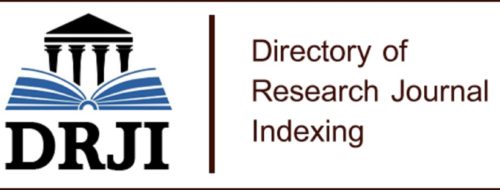Öz
Research and development expenditures are one of the key variables which countries have focused on to attain a sustainable growth performance in recent years. Research and development expenditures have export of one country shifted from low technology products to high technology products. This in turn increases export revenues and makes a significant contribution to economic growth, because high technology products yield more value-added products. This study examines the relationship between research and development expenditures and high technology exports in G-8 countries during the period 1996-2011 by using panel data analysis. We found that research and development expenditures and real effective exchange rate had positive impact on high technology exports. Moreover there was bidirectional causality between research and development expenditures and high technology exports and between research and development expenditures and real effective exchange rate and unidirectional causality from high technology exports to real effective exchange rate
Anahtar Kelimeler
R&D Expenditures High Technology Exports Panel Data Analysis
Kaynakça
- AKRAM, Muhammad; (2011), “Do Crude Oil Price Changes Affect Economic Growth of India, Pakistan and Bangladesh?”, Economics D-Level Thesis, Högskolan Dalarna: Dalarna University School of Technology and Business Studies.
- BELAY, Seyoum; (2005), “Determinants of Levels of High Technology Exports: An Empirical Investigation”, Advances in Competitiveness Research, 13(1), pp.64–79.
- BOJNEC, Stefan and Imre FERTO; (2011), “Impacts of Researchand Development on Manufacturing Trade”, Proceedings of Rijeka Faculty of Economics, 29(1), pp.65–88.
- BOZOKLU, Şeref ve Veli YILANCI; (2013), “Finansal Gelişme ve İktisadi Büyüme Arasındaki Nedensellik İlişkisi: Gelişmekte Olan Ekonomiler İçin Analiz”, Dokuz Eylül Üniversitesi İktisadi ve İdari Bilimler Fakültesi Dergisi, 28(2), ss.161–187.
- BRAUNERHJELM, Pontus and Per THULIN; (2006), “Can Countries Create Comparative Advantages?”, Centre of Excellence for Studies in Science and Innovation (CESIS) Electronic Working Paper Series, Paper No.61, Internet Address: http://www.diva-portal.org/smash/get/ diva2: 487456/FULLTEXT01.pdf, Date of Access:12.01.2014.
- DIPIETRO, William R. and Emmanuel ANORUO; (2006), “Creativity, Innovation, and Export Performance”, Journal of Policy Modeling, 28(2), pp.133–139.
- DUMITRESCU, Elena-Ivona and Christophe HURLIN; (2012), “Testing for Granger Modelling, 29(4), pp.1450–1460. in Heterogeneous Panels”, Economic
- GRANGER, Clive William John; (1969), “Investigating Causal Relations by Econometric Modelsand Cross Spectral Method”, Econometrica, 37, pp.424–438.
- GRANGER, Clive William John and Paul NEWBOLD; (1974), “Spurious Regressions in Economics”, Journal of Econometrics, 2/2, pp.111– 120.
- GÖÇER, İsmet; (2013a), “Ar-Ge Harcamalarının Yüksek Teknolojili Ürün İhracatı, Dış Ticaret Dengesi ve Ekonomik Büyüme Üzerindeki Etkileri”, Maliye Dergisi, 165, ss.215–240.
- GÖÇER, İsmet; (2013b), “Teknolojik İlerlemenin Belirleyicileri: NIC Ülkeleri için Panel Eşbütünlesme ve Panel Nedensellik Analizleri”, Maliye Finans Yazıları, 100, ss.116–141.
- HOLTZ-EAKIN, Douglas; Whitney NEWEY and Harvey S. ROSEN; (1988), “Estimating Vector Autoregression with Panel Data”, Econometrica, 56, pp.1371–1395.
- HSIAO, Cheng.; (2003), Analysis of Panel Data, Cambridge: Cambridge University Press.
- ISMAIL, Normaz Wana; (2013), “Innovation and High-Tech Trade in Asian Countries”, International Conference on Recent Developments in Asian Trade Policy and Integration, 20–21 February 2013, Kuala Lumpur, Malezya, Internet Address: http://www.nottingham.ac.uk/ gep/documents/ conferences/2013/malaysia-conference/normaz-wana- ismail.pdf, Date of Access:18.01.2014.
- KORAP, Levent; (2007), “Testing Causal Relationships Between Energy Consumption, Turkey”, Beykent University Journal of Social Sciences, 1(2), pp.1– 29. Real Income and Prices: Evidence from LANDESMANN, Michael and Michael “Technological Competition and Trade Performance”, Applied Economics, 29 (2), pp.179–106. PFAFFERMAYR; (1997),
- MONTOBBIO, Fabio and Francesco RAMPA; (2005), “The Impact of Technology and Structural Change on Export Performance in Nine Developing Countries”, World Development, 33(4), pp.527–547.
- PESARAN, M. Hashem; (2004), “General Diagnostic Tests for Cross Section Dependence in Panels”, University of Cambridge Working Paper, Paper No.0435, Internet Address: http://www.econ.cam.ac.uk/research/ repec /cam/pdf/cwpe0435.pdf, Date of Access:21.01.2014.
- PESARAN, M. Hashem; (2006), “A Simple Panel Unit Root Test in the Presence of Cross Section Dependence”, Cambridge University Working http://www.econ.cam.ac.uk/research/ Date of Access:23.01.2014. No:0346, Internet Address:
- repec/cam/pdf/cwpe0346.pdf,
- PESARAN, M. Hashem and Takashi YAMAGATA; (2008), “Testing slope homogeneity in large panels”, Journal of Econometrics, 142, pp.50– 93.
- ÖZER, Mustafa ve Necati ÇİFTÇİ; (2009), “Ar-Ge Harcamaları ve İhracat İlişkisi: OECD Ülkeleri Panel Veri Analizi”, Dumlupınar Üniversitesi Sosyal Bilimler Dergisi, 23, ss.39–49.
- UZAY, Nisfet; Mustafa DEMİR ve Ertuğrul YILDIRIM; (2012), “İhracat Performansı Açısından Teknolojik Yeniliğin Önemi: Türkiye İmalat Sanayi Örneği”, Doğuş Üniversitesi Dergisi, 13 (1), ss.147-160.
- VERSPAGEN, Bart and Katharine WAKELIN; (1997), “Trade and Technology from a Schumpeterian Perspective”, International Review of Applied Economics, 11(2), pp.181–194.
- VOSVRDA, Miloslav S.; (t.y.), “Stationarity and Unit Root Testing”, Internet Address:http://vosvrdaweb.utia.cas.cz/cykly/Stationarity%20and%20Un i%20Root%20Testing.pdf>, Date of Access: 16.12.2013.
- World Bank; (2014), “World Development Indicators”, Internet Address: http://data.worldbank.org/indicator, Date of Access:02.01.2014.
- World Bank; (2014), “World Development Indicators”, Internet Address: http://data.worldbank.org/topic/science-and-technology, Date of Access: 20.02.2014.
- YILDIRIM, Ertuğrul ve Ferdi KESİKOĞLU; (2012), “Ar-Ge Harcamaları ile İhracat Arasındaki Nedensellik İlişkileri: Türkiye Örneğinde Panel Nedensellik Testi Kanıtları”, Marmara Üniversitesi İ.İ.B.F. Dergisi, 32 (1), ss.165–180.
- YULE, G. Undy; (1926), “Why do We Sometimes Get Nonsense Correlations between Time Series? A Study in Sampling and the Nature of Time Series”, Journal of Royal Statistical Society, 89, pp.1–64.
ARAŞTIRMA GELİŞTİRME HARCAMALARININ YÜKSEK TEKNOLOJİ ÜRÜN İHRACATI ÜZERİNDEKİ ETKİSİ: G–8 ÜLKELERİ İÇİN BİR PANEL VERİ ANALİZİ
Öz
Araştırma geliştirme harcamaları, son yıllarda bir ülkenin sürdürülebilir bir büyüme performansı yakalayabilmesi için üzerinde durulan en önemli değişkenlerden birisidir. Araştırma geliştirme harcamaları öncelikli olarak bir ülkenin ihracatını düşük teknolojili ürünlerden yüksek teknolojili ürünlere kaydırmaktadır. Yüksek teknolojili ürünler daha fazla katma değer yarattıklarından dolayı, ülkenin ihracat gelirlerini arttırmakta ve ekonomik büyümeye önemli bir katkı sağlamaktadır. Bu çalışmada panel veri analizi kullanılarak 1996–2011 döneminde G–8 ülkelerinde araştırma geliştirme harcamaları ile yüksek teknoloji ürün ihracatı arasındaki ilişki analiz edilmeye çalışılmıştır. Çalışma sonucunda Ar-Ge harcamaları ve reel efektif döviz kurunun, yüksek teknolojili ürün ihracatı üzerinde pozitif etkiye sahip olduğu belirlenmiştir. Ayrıca Ar-Ge harcamaları ile yüksek teknolojili ürün ihracatı ve Ar-Ge harcamaları ile reel efektif döviz kuru arasında iki yönlü nedensellik, yüksek teknolojili ürün ihracatından reel efektif döviz kuruna doğru tek yönlü bir nedensellik olduğu tespit edilmiştir.
Anahtar Kelimeler
Ar-Ge Harcamaları İleri Teknoloji Ürün İhracatı Panel Veri Analizi.
Kaynakça
- AKRAM, Muhammad; (2011), “Do Crude Oil Price Changes Affect Economic Growth of India, Pakistan and Bangladesh?”, Economics D-Level Thesis, Högskolan Dalarna: Dalarna University School of Technology and Business Studies.
- BELAY, Seyoum; (2005), “Determinants of Levels of High Technology Exports: An Empirical Investigation”, Advances in Competitiveness Research, 13(1), pp.64–79.
- BOJNEC, Stefan and Imre FERTO; (2011), “Impacts of Researchand Development on Manufacturing Trade”, Proceedings of Rijeka Faculty of Economics, 29(1), pp.65–88.
- BOZOKLU, Şeref ve Veli YILANCI; (2013), “Finansal Gelişme ve İktisadi Büyüme Arasındaki Nedensellik İlişkisi: Gelişmekte Olan Ekonomiler İçin Analiz”, Dokuz Eylül Üniversitesi İktisadi ve İdari Bilimler Fakültesi Dergisi, 28(2), ss.161–187.
- BRAUNERHJELM, Pontus and Per THULIN; (2006), “Can Countries Create Comparative Advantages?”, Centre of Excellence for Studies in Science and Innovation (CESIS) Electronic Working Paper Series, Paper No.61, Internet Address: http://www.diva-portal.org/smash/get/ diva2: 487456/FULLTEXT01.pdf, Date of Access:12.01.2014.
- DIPIETRO, William R. and Emmanuel ANORUO; (2006), “Creativity, Innovation, and Export Performance”, Journal of Policy Modeling, 28(2), pp.133–139.
- DUMITRESCU, Elena-Ivona and Christophe HURLIN; (2012), “Testing for Granger Modelling, 29(4), pp.1450–1460. in Heterogeneous Panels”, Economic
- GRANGER, Clive William John; (1969), “Investigating Causal Relations by Econometric Modelsand Cross Spectral Method”, Econometrica, 37, pp.424–438.
- GRANGER, Clive William John and Paul NEWBOLD; (1974), “Spurious Regressions in Economics”, Journal of Econometrics, 2/2, pp.111– 120.
- GÖÇER, İsmet; (2013a), “Ar-Ge Harcamalarının Yüksek Teknolojili Ürün İhracatı, Dış Ticaret Dengesi ve Ekonomik Büyüme Üzerindeki Etkileri”, Maliye Dergisi, 165, ss.215–240.
- GÖÇER, İsmet; (2013b), “Teknolojik İlerlemenin Belirleyicileri: NIC Ülkeleri için Panel Eşbütünlesme ve Panel Nedensellik Analizleri”, Maliye Finans Yazıları, 100, ss.116–141.
- HOLTZ-EAKIN, Douglas; Whitney NEWEY and Harvey S. ROSEN; (1988), “Estimating Vector Autoregression with Panel Data”, Econometrica, 56, pp.1371–1395.
- HSIAO, Cheng.; (2003), Analysis of Panel Data, Cambridge: Cambridge University Press.
- ISMAIL, Normaz Wana; (2013), “Innovation and High-Tech Trade in Asian Countries”, International Conference on Recent Developments in Asian Trade Policy and Integration, 20–21 February 2013, Kuala Lumpur, Malezya, Internet Address: http://www.nottingham.ac.uk/ gep/documents/ conferences/2013/malaysia-conference/normaz-wana- ismail.pdf, Date of Access:18.01.2014.
- KORAP, Levent; (2007), “Testing Causal Relationships Between Energy Consumption, Turkey”, Beykent University Journal of Social Sciences, 1(2), pp.1– 29. Real Income and Prices: Evidence from LANDESMANN, Michael and Michael “Technological Competition and Trade Performance”, Applied Economics, 29 (2), pp.179–106. PFAFFERMAYR; (1997),
- MONTOBBIO, Fabio and Francesco RAMPA; (2005), “The Impact of Technology and Structural Change on Export Performance in Nine Developing Countries”, World Development, 33(4), pp.527–547.
- PESARAN, M. Hashem; (2004), “General Diagnostic Tests for Cross Section Dependence in Panels”, University of Cambridge Working Paper, Paper No.0435, Internet Address: http://www.econ.cam.ac.uk/research/ repec /cam/pdf/cwpe0435.pdf, Date of Access:21.01.2014.
- PESARAN, M. Hashem; (2006), “A Simple Panel Unit Root Test in the Presence of Cross Section Dependence”, Cambridge University Working http://www.econ.cam.ac.uk/research/ Date of Access:23.01.2014. No:0346, Internet Address:
- repec/cam/pdf/cwpe0346.pdf,
- PESARAN, M. Hashem and Takashi YAMAGATA; (2008), “Testing slope homogeneity in large panels”, Journal of Econometrics, 142, pp.50– 93.
- ÖZER, Mustafa ve Necati ÇİFTÇİ; (2009), “Ar-Ge Harcamaları ve İhracat İlişkisi: OECD Ülkeleri Panel Veri Analizi”, Dumlupınar Üniversitesi Sosyal Bilimler Dergisi, 23, ss.39–49.
- UZAY, Nisfet; Mustafa DEMİR ve Ertuğrul YILDIRIM; (2012), “İhracat Performansı Açısından Teknolojik Yeniliğin Önemi: Türkiye İmalat Sanayi Örneği”, Doğuş Üniversitesi Dergisi, 13 (1), ss.147-160.
- VERSPAGEN, Bart and Katharine WAKELIN; (1997), “Trade and Technology from a Schumpeterian Perspective”, International Review of Applied Economics, 11(2), pp.181–194.
- VOSVRDA, Miloslav S.; (t.y.), “Stationarity and Unit Root Testing”, Internet Address:http://vosvrdaweb.utia.cas.cz/cykly/Stationarity%20and%20Un i%20Root%20Testing.pdf>, Date of Access: 16.12.2013.
- World Bank; (2014), “World Development Indicators”, Internet Address: http://data.worldbank.org/indicator, Date of Access:02.01.2014.
- World Bank; (2014), “World Development Indicators”, Internet Address: http://data.worldbank.org/topic/science-and-technology, Date of Access: 20.02.2014.
- YILDIRIM, Ertuğrul ve Ferdi KESİKOĞLU; (2012), “Ar-Ge Harcamaları ile İhracat Arasındaki Nedensellik İlişkileri: Türkiye Örneğinde Panel Nedensellik Testi Kanıtları”, Marmara Üniversitesi İ.İ.B.F. Dergisi, 32 (1), ss.165–180.
- YULE, G. Undy; (1926), “Why do We Sometimes Get Nonsense Correlations between Time Series? A Study in Sampling and the Nature of Time Series”, Journal of Royal Statistical Society, 89, pp.1–64.
Ayrıntılar
| Birincil Dil | Türkçe |
|---|---|
| Bölüm | Makaleler |
| Yazarlar | |
| Yayımlanma Tarihi | 18 Mayıs 2015 |
| Yayımlandığı Sayı | Yıl 2014 |
Cited By
AR-GE HARCAMALARI ve YÜKSEK TEKNOLOJİLİ ÜRÜN İHRACATININ BÜYÜMEYE ETKİSİ: TÜRKİYE ÖRNEĞİ
Yönetim ve Ekonomi Araştırmaları Dergisi
https://doi.org/10.11611/yead.463205
Ar–Ge Harcamaları ve İhracat İlişkisinin İncelenmesi: Türkiye Örneği
Anemon Muş Alparslan Üniversitesi Sosyal Bilimler Dergisi
Hakan EYGÜ
https://doi.org/10.18506/anemon.761623
Türkiye’de Yüksek Teknoloji Ürün İhracatı ve İnovasyon İlişkisi Üzerine Ekonometrik Bir İnceleme
ODÜ Sosyal Bilimler Araştırmaları Dergisi (ODÜSOBİAD)
Nurbay SEY
https://doi.org/10.48146/odusobiad.785193
Impact of the Technological Transformation in Employment and Export on Economic Growth in Turkey and the EU Countries in an Information Economy Projection: Dynamic Panel Data Analysis
Anemon Muş Alparslan Üniversitesi Sosyal Bilimler Dergisi
Mustafa KARAKUŞ
https://doi.org/10.18506/anemon.906720
The Relationship Between High-Tech Product Exports, R&D Expenditures and Patent Applications: Dynamic Panel Data Analysis for Selected Countries
BİLTÜRK Journal of Economics and Related Studies
Mine YAŞAR
https://doi.org/10.47103/bilturk.791786
Sofistike Ürün İhracatının İlgili Sektör ve Ülke İhracatı İçerisindeki Önemi: Nano Kalsit Örneği
İnsan ve Toplum Bilimleri Araştırmaları Dergisi
İbrahim ÖZAYTÜRK
https://doi.org/10.15869/itobiad.777743
Relationship Between Globalization and Financial Development: An Empirical Study on Brics-T Countries
İzmir İktisat Dergisi
Mesut DOĞAN
https://doi.org/10.24988/ije.202136314
CO2 Emisyonları, Ekonomik Büyüme ve Sağlık Harcamaları İlişkisi: Türkiye ve Seçilmiş Ülke Örnekleri İçin Ampirik Bir Uygulama
MANAS Sosyal Araştırmalar Dergisi
Canan SANCAR
https://doi.org/10.33206/mjss.748253
İLERİ TEKNOLOJİ MAL İHRACATI VE AR-GE HARCAMALARI İLİŞKİSİ: TÜRKİYE İÇİN YAPISAL KIRILMALI BİR UYGULAMA
Ömer Halisdemir Üniversitesi İktisadi ve İdari Bilimler Fakültesi Dergisi
Hüseyin ÇELİK
https://doi.org/10.25287/ohuiibf.871754
Yüksek Teknoloji İçeren Ürün İhracatının İhracat Hacmi Ve Ekonomik Büyüme Üzerine Etkisi; Seçilmiş OECD Ülkeleri ve Türkiye Örneği
Yönetim, Ekonomi, Edebiyat, İslami ve Politik Bilimler Dergisi
Ali KONAK
https://doi.org/10.24013/jomelips.489768
BRICS ve MIST Ülkelerinde Ar-Ge Harcamaları İle Yüksek Teknolojili Ürün İhracatı Arasındaki İlişki Üzerine Bir Araştırma
İnsan ve Toplum Bilimleri Araştırmaları Dergisi
Füsun ÇELEBİ BOZ
https://doi.org/10.15869/itobiad.533402
The Effect Of R_D Expenditures On Export And Economic Growth
Econder International Academic Journal
RAMAZAN AVDAR
https://doi.org/10.35342/econder.665074













ERÜ İktisadi ve İdari Bilimler Fakültesi Dergisi 2021 | iibfdergi@erciyes.edu.tr
Bu eser Creative Commons Atıf-Gayri Ticari-Türetilemez 4.0 Uluslararası Lisansı ile lisanslanmıştır.


